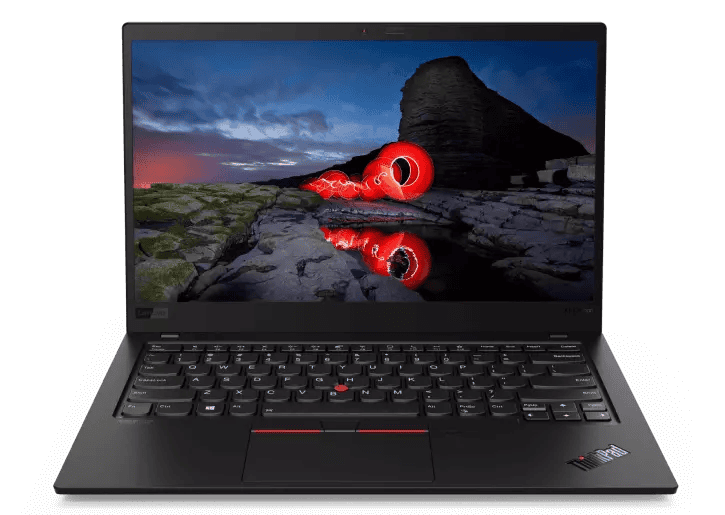ThinkPad laptops offer versatile features including touchscreens. But sometimes you may want to turn this function off. To disable the touch screen on your ThinkPad, open Device Manager, find “HID-compliant touch screen” under Human Interface Devices, right-click it, and select “Disable device”.
This quick fix can solve various issues. You might want to stop accidental touches or save battery life. Or perhaps you prefer using the keyboard and trackpad. Whatever your reason, it’s easy to do.
Remember, you can always turn the touch screen back on using the same steps. This gives you control over how you interact with your ThinkPad. Let’s look at some key benefits of disabling your touch screen:
| Benefit | Description |
|---|---|
| Battery Life | Extends laptop usage time |
| Focus | Reduces distractions from accidental touches |
| Cleaning | Allows wiping the screen without unwanted input |
| Preference | Suits users who prefer traditional input methods |
Turning Off the Touch Screen on a ThinkPad
Why Turn Off the Touch Screen?
There are several reasons why you might want to disable the touch screen on your ThinkPad. You might accidentally touch the screen while typing. This can cause unwanted actions. Or, you might be using an external monitor. You might not need the touch screen anymore. Turning it off can prevent accidental input.
Using Device Manager (Windows)
The most reliable way to disable the touch screen is through Device Manager in Windows:
- Right-click the Start button and select “Device Manager”.
- Expand “Human Interface Devices”.
- Look for a device named “HID-compliant touch screen” or similar. There might be more than one.
- Right-click on the touch screen device you want to disable and select “Disable device”.
- A warning message will appear. Click “Yes” to confirm.
To re-enable the touch screen, follow the same steps but select “Enable device” instead of “Disable device”.
Using the Control Panel (Older Windows Versions)
On older versions of Windows, you can use the Control Panel:
- Open the Control Panel.
- Go to “Hardware and Sound” then “Device Manager”.
- Follow steps 2-5 from the Device Manager method above.
Using the BIOS (Less Common)
In some rare cases, there might be a setting in the BIOS to disable the touch screen. This is less common than the Device Manager method. Accessing the BIOS varies slightly between ThinkPad models. Here’s the general process:
- Restart your ThinkPad.
- As the ThinkPad logo appears, press the key to enter the BIOS setup. This key is usually F1, but it could also be F2, F12, or Enter. The correct key is usually displayed briefly on the screen during startup.
- Once in the BIOS, navigate using the arrow keys. Look for a section related to “Advanced,” “Input Devices,” or “Peripherals.”
- Look for a setting related to the touch screen or digitizer. If you find it, you can usually enable or disable it.
- Save the changes and exit the BIOS. Your ThinkPad will restart.
Caution: Be careful when changing settings in the BIOS. Incorrect settings can cause problems with your computer. If you are not comfortable with the BIOS, it is best to use the Device Manager method.
Troubleshooting
If you can’t find the touch screen device in Device Manager, try these steps:
- Show hidden devices: In Device Manager, click “View” and then “Show hidden devices.”
- Update drivers: Make sure your chipset and display drivers are up to date. You can get these from the Lenovo support website.
- Restart your computer: A simple restart can sometimes resolve device detection issues.
Other Display Settings on Your ThinkPad
Besides turning off the touch screen, you can adjust other display settings on your ThinkPad. You can change the screen resolution. You can also adjust the brightness. You can also change the display scaling. These settings can help you optimize your viewing experience. They can also help with eye strain. You can find these settings in the Windows Settings app, under “System” and then “Display.”
Understanding Touch Screen Technology on Lenovo ThinkPad
Lenovo ThinkPad laptops often come equipped with touch screen capabilities. This feature allows you to interact with your device using your fingers or a stylus.
Touch screens on ThinkPads use capacitive technology. This system detects changes in electrical charge when you touch the screen.
The display is coated with a transparent conductive material. When you touch it, your finger slightly changes the electrical field. The device then calculates the exact location of your touch.
Most ThinkPad touch screens support multi-touch gestures. You can pinch to zoom, swipe to scroll, and use other intuitive motions.
Here’s a quick comparison of touch screen vs. traditional input methods:
| Feature | Touch Screen | Touchpad/Mouse |
|---|---|---|
| Precision | Moderate | High |
| Ease of Use | High | Moderate |
| Speed | Fast | Very Fast |
| Fatigue | Higher | Lower |
Touch screens offer direct interaction with on-screen elements. This can be especially useful for tasks like drawing or navigating maps.
You can turn off the touch screen to save battery life or prevent accidental inputs. This is done through your device settings.
Some ThinkPad models feature special stylus pens. These work with the touch screen for more precise input.
Touch screen technology continues to improve. Newer models offer better responsiveness and accuracy than earlier versions.
Navigating the Windows Settings and Device Manager
Turning off your ThinkPad’s touchscreen involves accessing specific Windows settings. You’ll need to navigate to the Device Manager and locate the correct hardware options.
Accessing Device Manager
To reach Device Manager on Windows 10 or 11, click the Start button. Type “Device Manager” in the search bar. Click the Device Manager app when it appears in the results.
Another method is to right-click the Start button. Select “Device Manager” from the menu that pops up.
For quick access, press the Windows key + X. This opens the Quick Access Menu. Device Manager is usually listed here.
Locating Human Interface Devices
Once in Device Manager, find “Human Interface Devices” in the list. Click the arrow next to it to expand the category.
Look for “HID-compliant touch screen” in the expanded list. You may see multiple entries with this name.
Right-click on the touch screen device you want to disable. Select “Disable device” from the context menu.
Windows will ask if you’re sure. Click “Yes” to confirm.
| Action | Result |
|---|---|
| Disable device | Turns off touchscreen |
| Enable device | Turns on touchscreen |
Your touchscreen will stop working immediately after disabling it. To turn it back on, follow the same steps and choose “Enable device” instead.
Steps to Disable the Touch Screen Feature
Disabling the touch screen on your Lenovo ThinkPad is a straightforward process. You can easily turn this feature off and on through the Windows Device Manager.
Disabling the HID-Compliant Touch Screen
To disable the touch screen on your Lenovo laptop:
- Press Windows key + X and select “Device Manager”
- Expand “Human Interface Devices”
- Right-click on “HID-compliant touch screen”
- Select “Disable device“
- Confirm your choice
Your touch screen will stop responding immediately. If you have multiple HID-compliant touch screen devices listed, repeat steps 3-5 for each one.
Enabling the Touch Screen
To turn the touch screen back on:
- Open Device Manager
- Expand “Human Interface Devices”
- Find the disabled touch screen device
- Right-click and choose “Enable device“
Your touch screen should work again right away. If it doesn’t, try restarting your ThinkPad.
| Action | Steps | Result |
|---|---|---|
| Disable | Right-click > Disable device | Touch screen stops working |
| Enable | Right-click > Enable device | Touch screen starts working |
Remember, these steps work for most Windows laptops, not just Lenovo ThinkPads.
Additional Considerations and Benefits
Turning off your ThinkPad’s touch screen offers several advantages beyond just disabling the feature. It can improve your device’s performance and enhance your user experience.
Enhancing Battery Life
Disabling the touch screen can significantly extend your ThinkPad’s battery life. The touch screen component continuously draws power even when not in use. By turning it off, you reduce energy consumption.
To maximize battery savings:
- Adjust power settings in Windows
- Lower screen brightness
- Close unused apps and browser tabs
These steps, combined with disabling touch, can add hours to your battery life. This is especially useful when working away from power outlets or during long flights.
Preventing Accidental Touches
Deactivating the touch screen eliminates unwanted inputs caused by accidental touches. This is particularly helpful when:
- Using your ThinkPad in tablet mode
- Working in cramped spaces like airplanes
- Collaborating with others who may inadvertently touch your screen
By turning off the touchscreen, you maintain full control over your device’s inputs. This leads to a smoother, more efficient workflow without interruptions from unintended actions.
Using External Devices
Disabling the touch screen can improve your experience when using external input devices. Many users prefer the precision of a mouse or trackpad for detailed work.
| Input Device | Advantages |
|---|---|
| Mouse | Precise control, ergonomic for long use |
| Trackpad | Built-in, no extra equipment needed |
| Stylus | Natural writing and drawing experience |
When the touch screen is off, you can rest your hand on the display without causing unwanted inputs. This is especially useful for artists or note-takers using a stylus. It allows for a more natural and comfortable drawing or writing position.
Frequently Asked Questions
Disabling the touchscreen on Lenovo ThinkPad laptops varies slightly depending on the model and operating system. Here are some common questions about managing touch functionality on these devices.
What are the steps to disable the touchscreen feature on a Lenovo ThinkPad running Windows 11?
To turn off the touchscreen on a Lenovo ThinkPad with Windows 11:
- Press Windows + X and select “Device Manager”
- Expand “Human Interface Devices”
- Right-click on “HID-compliant touch screen”
- Choose “Disable device”
This process deactivates the touchscreen until you re-enable it.
How can I reactivate the touchscreen capability on my Lenovo laptop with Windows 10?
Reactivating the touchscreen on Windows 10 is simple:
- Open Device Manager
- Find “Human Interface Devices”
- Locate “HID-compliant touch screen”
- Right-click and select “Enable device”
Your touchscreen should work again after a quick restart.
Is it possible to toggle off the touchscreen function on a Lenovo Yoga device?
Yes, you can disable the touchscreen on Lenovo Yoga laptops. The method is similar to other ThinkPads:
- Access Device Manager
- Find the touch screen device under “Human Interface Devices”
- Disable it
Some Yoga models may have a dedicated hardware button to toggle touch functionality.
What is the procedure to disable touch functionality in Lenovo ThinkPad X1 models?
For ThinkPad X1 models:
- Open Device Manager
- Expand “Human Interface Devices”
- Find “HID-compliant touch screen”
- Right-click and select “Disable device”
ThinkPad X1 users might also find touch settings in Lenovo Vantage software if installed.
Can the touch screen be permanently turned off on a Lenovo ThinkPad, or is it only a temporary setting?
The touch screen setting is not permanent. You can always re-enable it through Device Manager. For a long-term solution:
- Disable the touch screen driver
- Set Windows to not automatically update that specific driver
This approach keeps the touch screen off until you choose to update the driver.
Where can I find the setting to disable tap-to-click on my Lenovo ThinkPad?
To disable tap-to-click:
- Open Windows Settings
- Go to “Devices” then “Touchpad”
- Toggle off “Tap to click”
Some ThinkPads may have this option in Lenovo Vantage or ThinkPad-specific settings.
| Feature | Location to Disable |
|---|---|
| Touchscreen | Device Manager |
| Tap-to-click | Windows Settings or Lenovo Software |
| Touch Gestures | Windows Settings > Devices > Touchpad |







